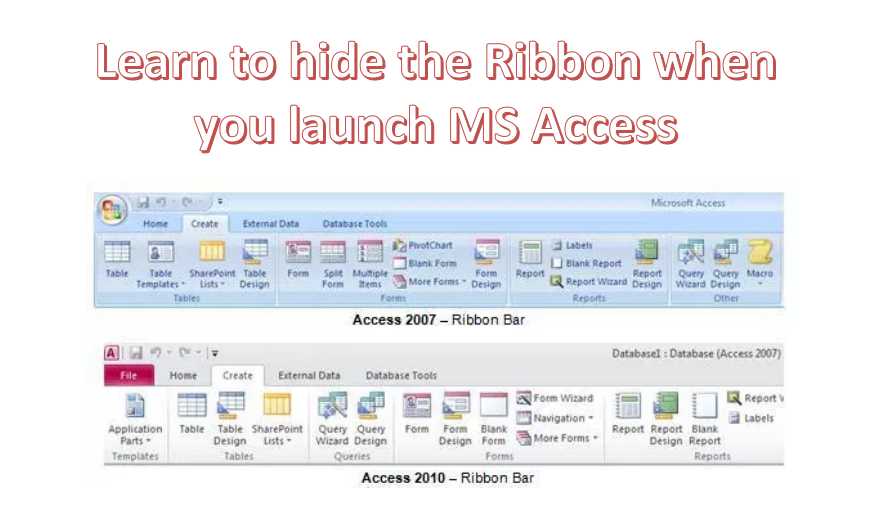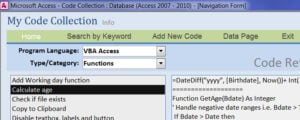In this article, we learn the process of using USysRibbons Table for creating customized ribbon and the applying it while launching Access.
Having Ribbons in your MS Access application helps greatly when you need to make use of all the tabs that are present on the ribbon. But at times there can be situations when you need to prevent the tabs on the ribbon from appearing at the time of launching the application. The process of hiding the ribbon or loading one without any tabs has not been provided in MS Access. To implement it you will have to make use of external methods. One of these methods will be described in this article.
Hiding Ribbon when starting MS Access
Due to the lack of a default method in the application for hiding the ribbon, you need to opt for creating and loading a customized ribbon that can hide all the inbuilt tabs. Before you can load this customized ribbon, you will first have to create it. And once you are done with the creation part, you should opt for storing its settings in the USysRibbons table.
The USysRibbons table needs to be created with specific column names only so that the customizations made to the ribbon can be implemented. To make sure that you are creating the USysRibbons in the right manner, you need to make use of a particular set of settings. To know what those settings are, continue reading.
Use the following Settings in USysRibbons table
- RibbonName – This is supposed to be one of the column names in the table, and the data type for this column needs to be set to Text. The column will contain the custom ribbon name that needs to be associated with the customization that has been added.
- RibbonXML – This is another column name that needs to be present in the USysRibbons table. The Data type for this needs to be set to Memo. This will be used for containing the Extensibility of the ribbon in the form of XML that will define the customizations of the ribbon.
Once you have added the above-mentioned settings in the USysRibbons table, you now need to set the ribbon customization settings that will be stored in this table.
Store the following Ribbon Customization settings in the USysRibbon table.
- RibbonName – This is the column that we added in the settings of the table, now we need to add the ribbon customization setting of this column. Here you need to set the ribbon customization setting for this column to ‘HideTheRibbon’.
- Ribbon XML – Another column that we added in the table settings, here you will need to add the XML code for the customizations that you have added to the table.
Once you have added the customization settings of the ribbon to the USysRibbons table, you can then opt for applying those when starting MS Access.
Steps for Applying Custom Ribbon when launching MS Access
Make sure the custom ribbon is available at the start of the application, by following the above-explained procedure.
- Once the customized ribbon is available to the application, you can opt for applying it by closing the application first, and then restart it.
- Now go to the MS Office button, and select Access Options.
- Select the Current Database option, in the Ribbon and Toolbar Options section select RibbonName list, and click on HideTheRibbon.
- Close the application first, and then restart it.
Access users love to make customized forms and applications that can be used to store data important for them. Now if you do not wish to lose the valuable data stored in your access database, always keep an utility that can repair accdb database handy.
Author Introduction:
Vivian Stevens is a data recovery expert in DataNumen, Inc., which is the world leader in data recovery technologies, including SQL Server fix and excel recovery software products. For more information visit www.datanumen.com
 Make sure the custom ribbon is available at the start of the application, by following the above-explained procedure.
Make sure the custom ribbon is available at the start of the application, by following the above-explained procedure.